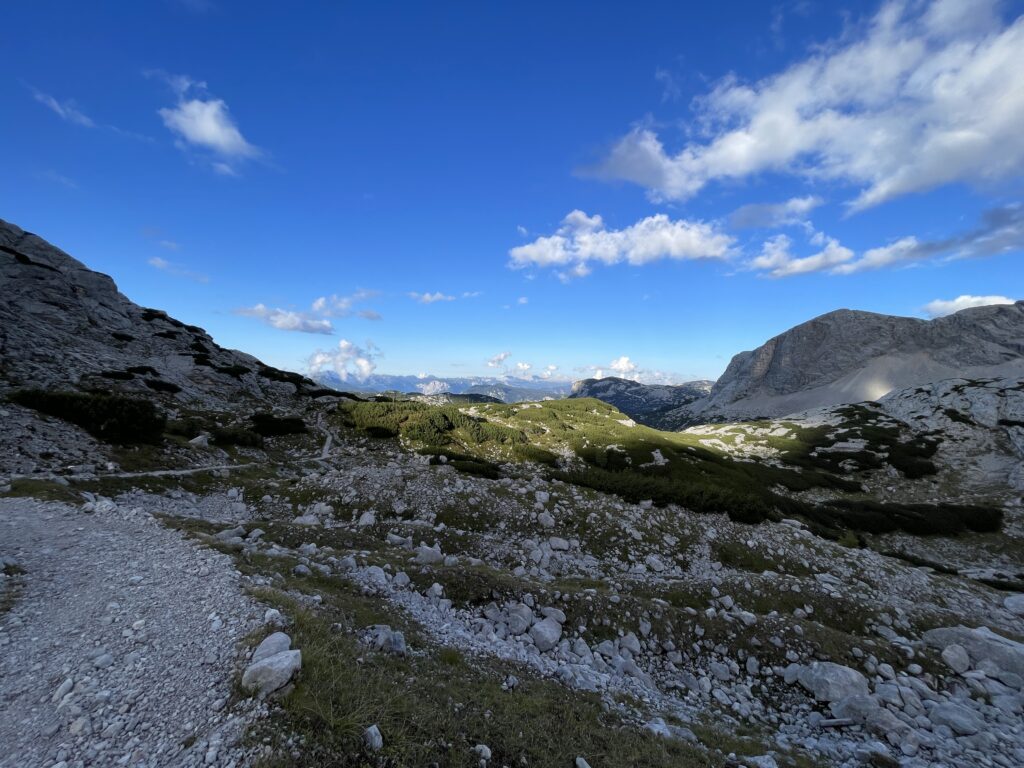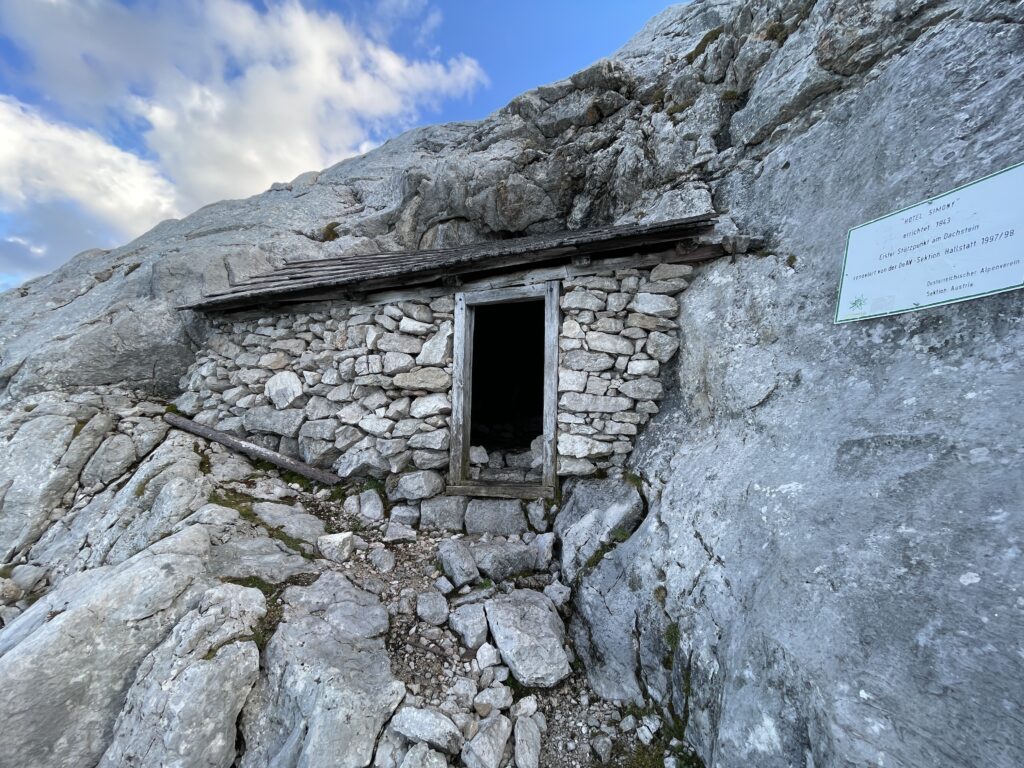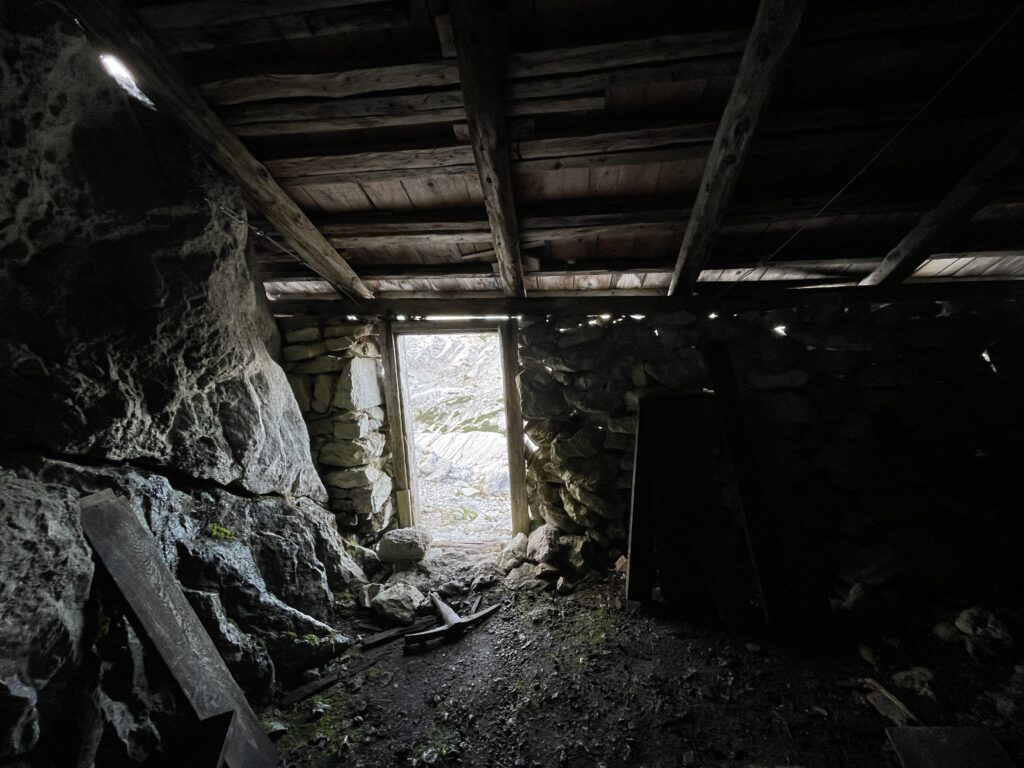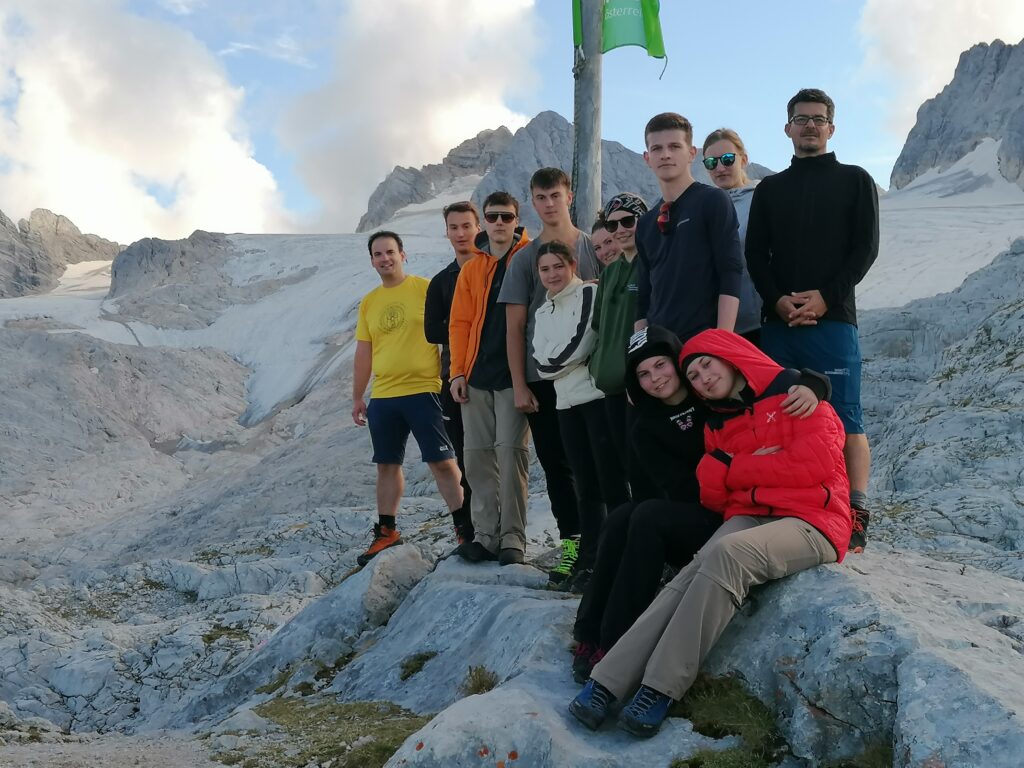At the beginning of the 3rd activity with the aim of exploring the Hallstatt glacier of the Dachstein massif, the alpine altitude levels from the montane to the alpine altitude level had to be climbed first by gondola, and then on foot as the day progressed. The nival stage of the perennial – today no longer perennial – ice is the subject of the next day.
In the central Alps, the montane altitudinal stage lies between 800 and 1400 m above sea-level. It is characterized by deciduous and mixed forests and intensive agriculture. Due to the steep and deeply cut valleys, late frosts in the late spring and early frosts at the end of the calendar summer are already frequent.
The alpine stage with an approximate extension of 1400 – 2500 m above sea level follows upwards. Here the deciduous and mixed forest changes into a pure coniferous forest, often formed by stone pines. This is the combat zone of the forest with the forest and tree line and the grassy communities of the alpine pastures, which are used as summer pastures. Here, in the uppermost regions, lie the feeding areas of the alpine glaciers, including those of the Dachstein.
The nival stage above the border of closed vegetation of the higher alpine peaks forms the highest level. It is dominated by the overlying rock, which has snowfields during large parts of the year and hosts the nutrient areas of the glaciers. The highest peaks were also free of snow and ice at the time of the last glaciation of the Alps (until about 10,000 years before today) and tower as nunatakka over the lower lying areas.








